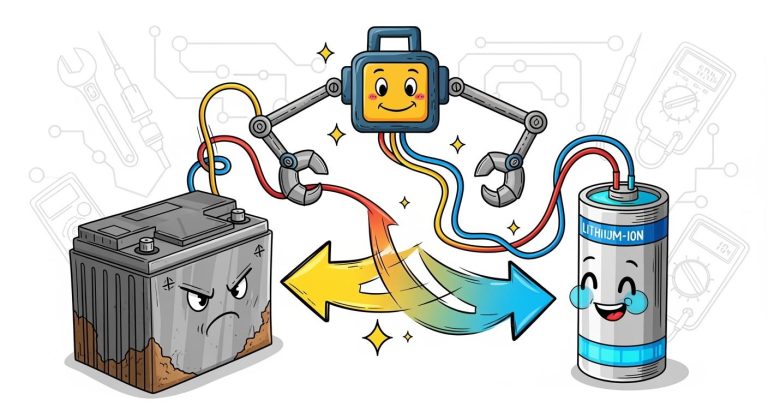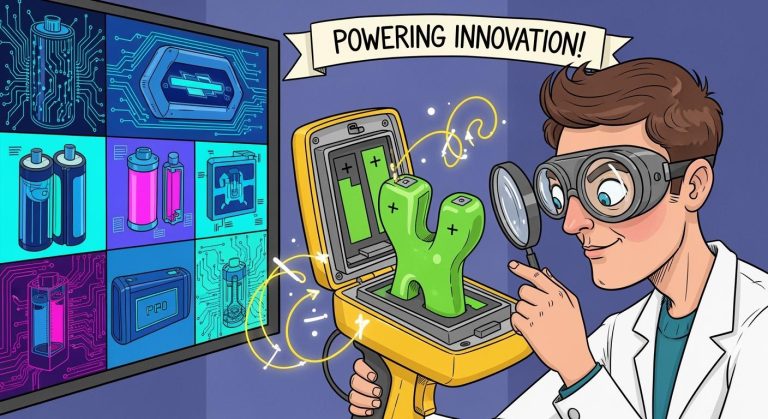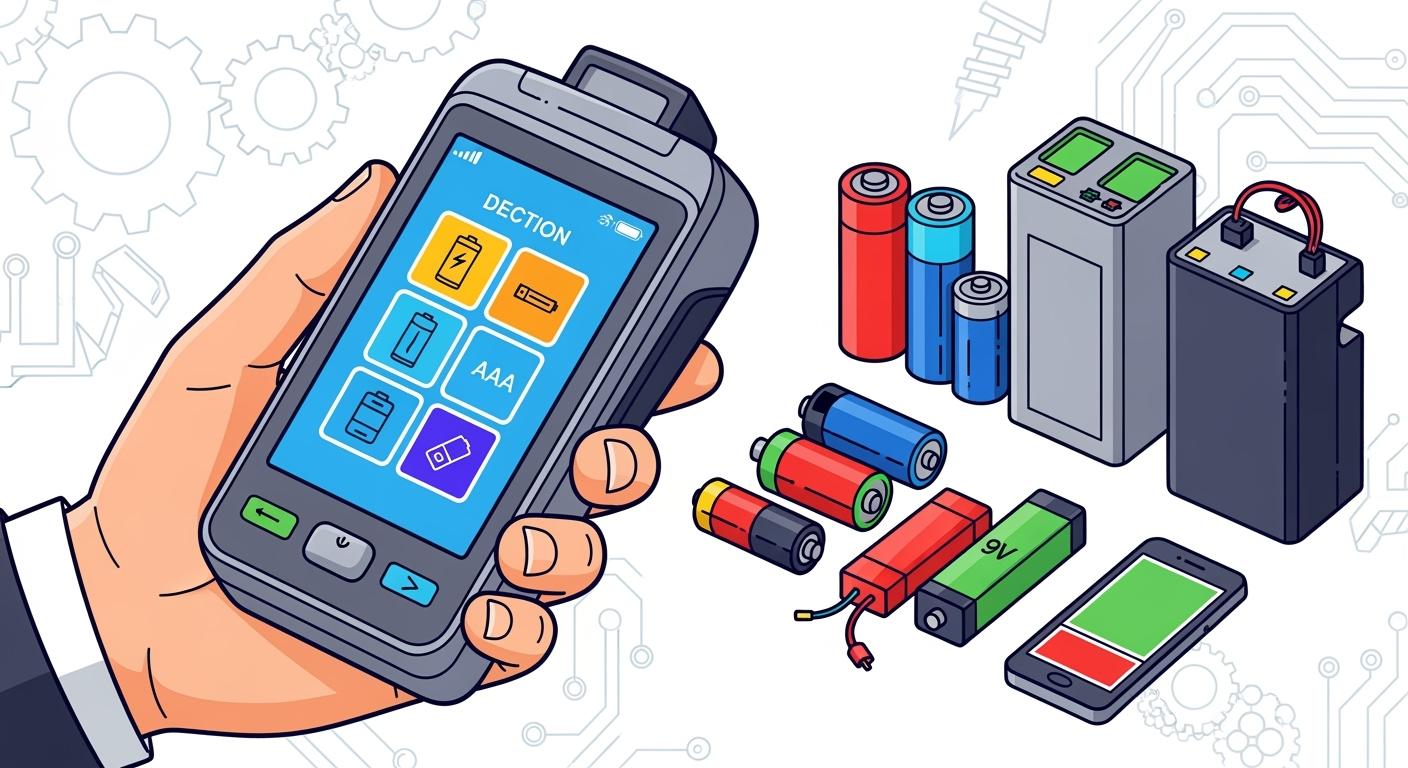
When you need to choose the right battery for inspection handheld terminals, you have to make significant decisions. Selecting the best battery ensures your device operates efficiently without interruptions. The right battery enhances your productivity and helps you avoid delays. It’s essential to consider battery life, safety, and compatibility with your environment. A long-lasting battery allows you to work continuously throughout your shift. Fast charging capabilities save you time and increase your efficiency. The type of battery you choose affects the weight and portability of your device, which is crucial if you are frequently on the move at work. By carefully choosing the right handheld terminal and battery, your equipment will meet your specific needs, leading to improved results for each task.
Key Takeaways
Pick the right battery for your inspection job. Lithium-ion batteries like LiFePO4 and NMC last long and work well.
Make sure the battery fits by checking voltage, size, and connector type. This stops damage and helps your handheld terminal work right.
Take care of your battery by cleaning terminals and looking for damage. Good care makes your battery last longer and work better.
Plan to change your battery when its cycle life ends. Knowing when to replace batteries stops surprise problems and saves money.
Follow safety rules and check for certifications like UL 1642. This makes sure your battery is safe and lowers risks.
Part1: Choose the Right Battery Type
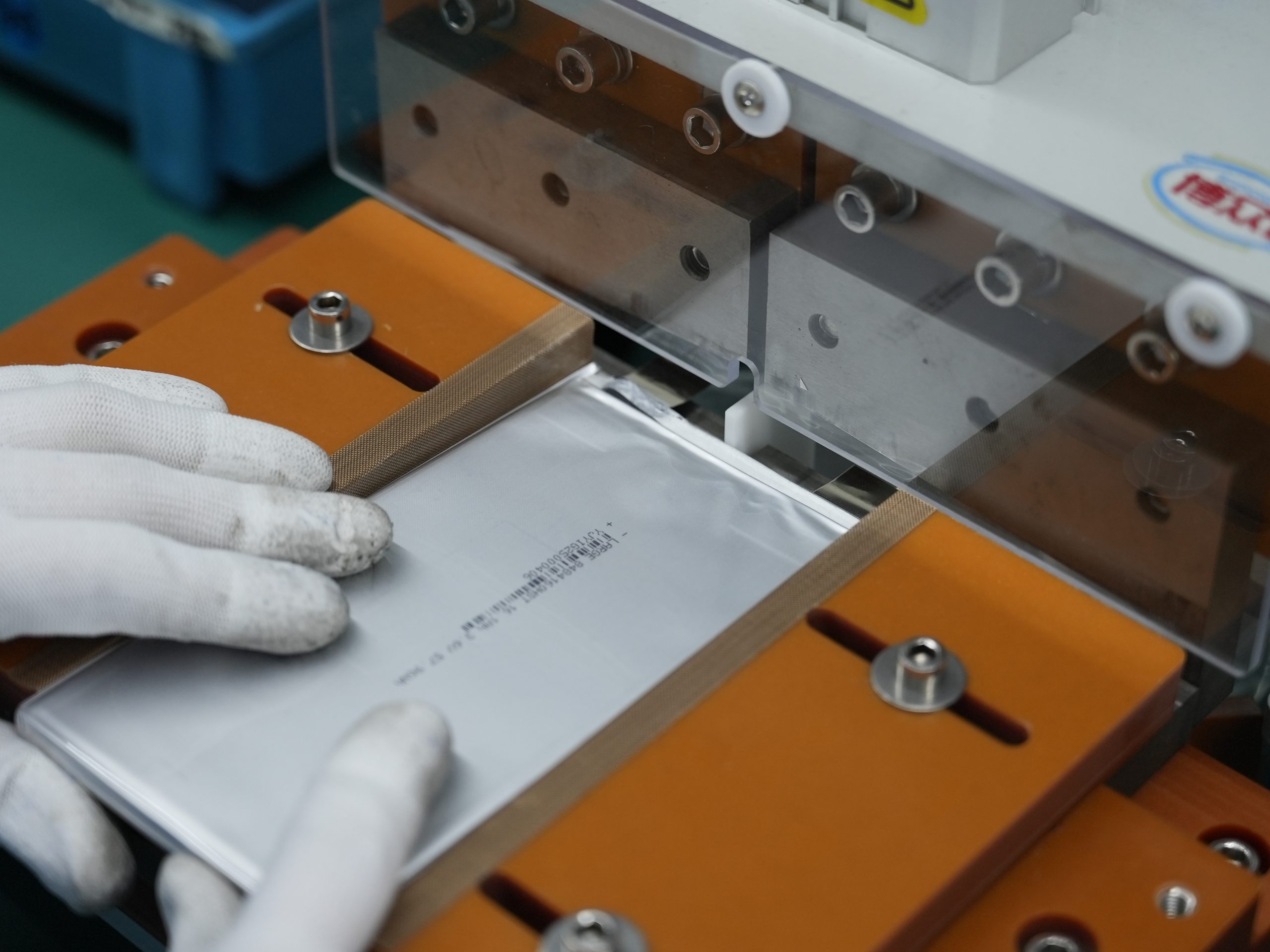
1.1 Battery Chemistries Overview
You should know about battery chemistries before picking a battery. Each battery chemistry works differently in different places. The most common battery types for handheld terminals are lithium-ion, nickel-metal hydride, and alkaline. Some advanced handheld terminals use lithium battery terminals with special chemistries like LiFePO4, NMC, LCO, LMO, LTO, solid-state, and lithium metal.
Here is a table that shows platform voltage, energy density, and cycle life for main lithium battery chemistries in handheld terminals:
Chemistry | Platform Voltage | Energy Density (Wh/kg) | Cycle Life (cycles) | Typical Applications |
|---|---|---|---|---|
LiFePO4 | 3.2V | 90-160 | 2,000+ | Industrial, robotics, infrastructure |
NMC | 3.7V | 150-220 | 1,000–2,000 | Medical, security systems, consumer |
LCO | 3.7V | 150-200 | 500–1,000 | Consumer electronics |
LMO | 4.0V | 100-150 | 300–700 | Power tools, industrial |
LTO | 2.4V | 70-80 | 3,000–7,000 | Medical, robotics, infrastructure |
Solid-state | 3.7V+ | 250+ | 2,000+ | Advanced industrial, medical |
Lithium Metal | 3.6V+ | 300+ | 500–1,000 | Next-gen security, infrastructure |
Lithium battery terminals give you many choices for different handheld terminal jobs. LiFePO4 batteries last a long time and keep voltage steady, which is good for industrial handheld terminals. NMC batteries have high energy density and last long, so they work well for medical and security handheld devices. LTO batteries are safe and last a long time, which is important for robotics and infrastructure handheld terminals. Solid-state and lithium metal batteries are new and offer more energy and better safety.
Tip: Always check the battery type and voltage your handheld terminal needs before you buy. This helps you pick the right battery terminal connectors and stops problems with compatibility.
1.2 Pros and Cons of Each Battery Type
You need to look at the good and bad sides of each battery type before you choose one for your handheld terminal. The table below lists the main pros and cons for lithium-ion, nickel-metal hydride, and alkaline batteries used in handheld terminals:
Battery Type | Advantages | Disadvantages |
|---|---|---|
High energy density, rechargeable, supports fast charging | Expensive, needs protection circuits, degrades in high temperatures | |
Nickel-Metal Hydride | Environmentally friendly, good cost-performance balance, higher capacity | High self-discharge, heavier, lower energy density, poor cold performance |
Alkaline | Widely available, inexpensive, long shelf life | Disposable, cannot recharge, leaks can damage handheld terminal connectors |
Lithium battery terminals are great because they have high energy density and can recharge. You can use them in handheld terminals that need to charge often and run for a long time. Nickel-metal hydride batteries are cheaper and work well, but they lose charge faster and are heavier. Alkaline batteries are good for handheld terminals that do not use much power, but you need to replace them often and throw them away safely.
Note: If your handheld terminal gets hot, lithium-ion batteries may not last as long. You should use lithium battery terminals with LTO or LiFePO4 chemistry for better safety in hot places.
1.3 Matching Battery Type to Inspection Needs
You should match the battery type and voltage to what your handheld terminal needs for inspection. First, check the voltage and current your handheld terminal uses. Most lithium battery terminals have more energy and last longer, which is important for industrial, medical, and security inspections.
Here is a table that shows typical voltage per cell and energy density for main battery types in handheld terminals:
Battery Type | Voltage per Cell | Energy Density (Wh/kg) |
|---|---|---|
NiMH | 1.25V | 55-110 |
Lithium-ion | 3.7V | 100-300 |
If your handheld terminal needs lots of power and long use, pick lithium battery terminals with NMC or LCO chemistry. For handheld terminals in tough places, LiFePO4 or LTO batteries are safer and last longer. You should also think about the temperature where you use your handheld terminal. Lithium-ion batteries work best between 15°C and 35°C. If you use your handheld terminal outside this range, pick a battery type that stays safe and works well.
For medical handheld terminals, use lithium battery terminals with steady voltage and long life, like LiFePO4 or LTO.
For robotics and industrial handheld terminals, choose lithium battery terminals with high cycle life and strong battery terminal connectors.
For security systems and infrastructure handheld terminals, pick lithium battery terminals with high energy density and steady power.
Best Practice: Test your battery terminal connectors often and check your handheld terminal for problems. Use certified testing tools to make sure your battery works well and is safe.
You can make your handheld terminal work better and last longer by picking the right battery type and voltage. Always talk to your supplier to make sure your lithium battery terminals fit your inspection needs and work well. For more science about lithium battery performance, you can look at Nature’s battery research.
Part2: Handheld Terminal Compatibility
Picking the right battery is not just about power. The battery must fit your handheld terminal. It should work with all the features and match the electrical needs. This part explains how to check if the battery is right. It helps you keep your inspection handheld working well.
2.1 Physical and Electrical Fit
You need to make sure the battery fits in your handheld terminal. The battery must be the right size and shape for the compartment. If it does not fit, it can break the terminal or lose power. Always measure the compartment and check the battery size before buying.
The battery must also match the voltage and current your terminal needs. Different lithium battery chemistries have different voltages. If you use the wrong voltage, the terminal may not work or could break. Always read the manual to find the right voltage and current.
Tip: Pick a battery with the same connector as your terminal. This keeps the connection safe and the power steady.
Check your battery often for problems. Look for loose connectors, rust, or swelling. Change the battery if you see damage. This keeps your handheld safe and working well.
2.2 Integration with Terminal Features
Some handheld terminals have special features like wireless, barcode scanning, or GPS. The battery must support these features without losing power. Some features use more power, like real-time data or scanning. You need a battery that can handle these needs.
Battery management systems help the battery work safely with your terminal. A good system stops overheating, overcharging, and short circuits. It also shows you battery health in real time. This helps you plan repairs and avoid sudden problems.
Here is a table that shows how battery management systems help:
Feature | Benefit |
|---|---|
Safety | Stops overheating, overcharging, and short circuits, lowering fire risk. |
Maximizing Battery Lifespan | Makes charging better to help the battery last longer. |
Efficiency | Stores and gives power well. |
Monitoring and Diagnostics | Shows health data to find problems early. |
Sustainability | Cuts down on waste by keeping the battery healthy. |
If your terminal uses lithium battery chemistries like LTO or solid-state, you get more safety and longer use. These batteries are good for features that need steady power and strong connections. Always check if your battery supports the features you use most.
2.3 Ensuring Voltage and Current Alignment
Matching voltage and current is important for safety and good use. Your terminal needs a battery with the right voltage and current. If the voltage is too high, the terminal can break. If it is too low, the device may not work or could turn off.
Most lithium battery chemistries have set voltages. For example, LiFePO4 batteries are 3.2V, and NMC and LCO batteries are 3.7V. Always match the battery voltage to what your terminal needs. Check the current rating too. Features like wireless or data need batteries that give steady current.
Check your terminal and battery often. Look for overheating, slow charging, or sudden shutoffs. These can mean the voltage or current is wrong. Change the battery if you see these signs.
Note: The right battery helps your terminal connect better and last longer. It also keeps your device safe from damage.
You can keep your inspection handheld working well by checking the fit, supporting all features, and matching voltage and current. Regular checks and a good battery management system help you avoid trouble and keep your team working.
Part3: Battery Life and Performance
3.1 Estimating Usage and Power Needs
You should figure out how much power your terminal uses. First, decide how long you want it to work before charging. Think about which features you use most, like wireless, scanning, or GPS. Each feature uses battery power in a different way. If your terminal does hard jobs, it needs a bigger battery that gives steady power. Lithium battery packs such as LiFePO4, NMC, and LTO have strong energy and last a long time. These battery chemistries help your terminal work well and keep the battery lasting longer.
Tip: Make sure your battery size matches your daily work. This helps your terminal stay on and lets your team move around easily.
3.2 Balancing Capacity and Size
You need to find a good balance between battery size and weight. Bigger batteries last longer but make your terminal heavier. High energy density batteries, like lithium-ion, give more power without adding much weight. Here is a table that shows a small battery design for inspection terminals:
Feature | Specification |
|---|---|
Length | 57 mm (2.25″) |
Width | 52 mm (2.05″) |
Height | 14.5 mm (0.6″) |
Weight | 114 grams (4 oz) |
High cycle life means you can charge the battery many times.
No memory effect lets you charge anytime without hurting battery life.
Steady performance makes sure your terminal works well for a long time.
Note: If you want your terminal to be easy to carry, pick a battery that is light and has high energy. This helps your team move around during inspections.
3.3 Performance in Inspection Environments
Battery performance can change in different places. Hot, cold, wet, or rough areas can make batteries work less well. Medical, robotics, security, infrastructure, consumer electronics, and industrial jobs all have their own problems. Lithium battery chemistries like LTO and LiFePO4 work well in hot and cold places and give steady power. Good battery management systems watch temperature and humidity. They use sealed cases and materials that do not rust to keep batteries safe. Checking and taking care of your battery often helps it work better.
Temperature systems help keep battery power steady.
Humidity control stops rust and keeps power strong.
Pressure and strong seals protect batteries in tough places.
For more information about battery performance, you can visit Nature’s battery research.
Part4: Safety and Durability
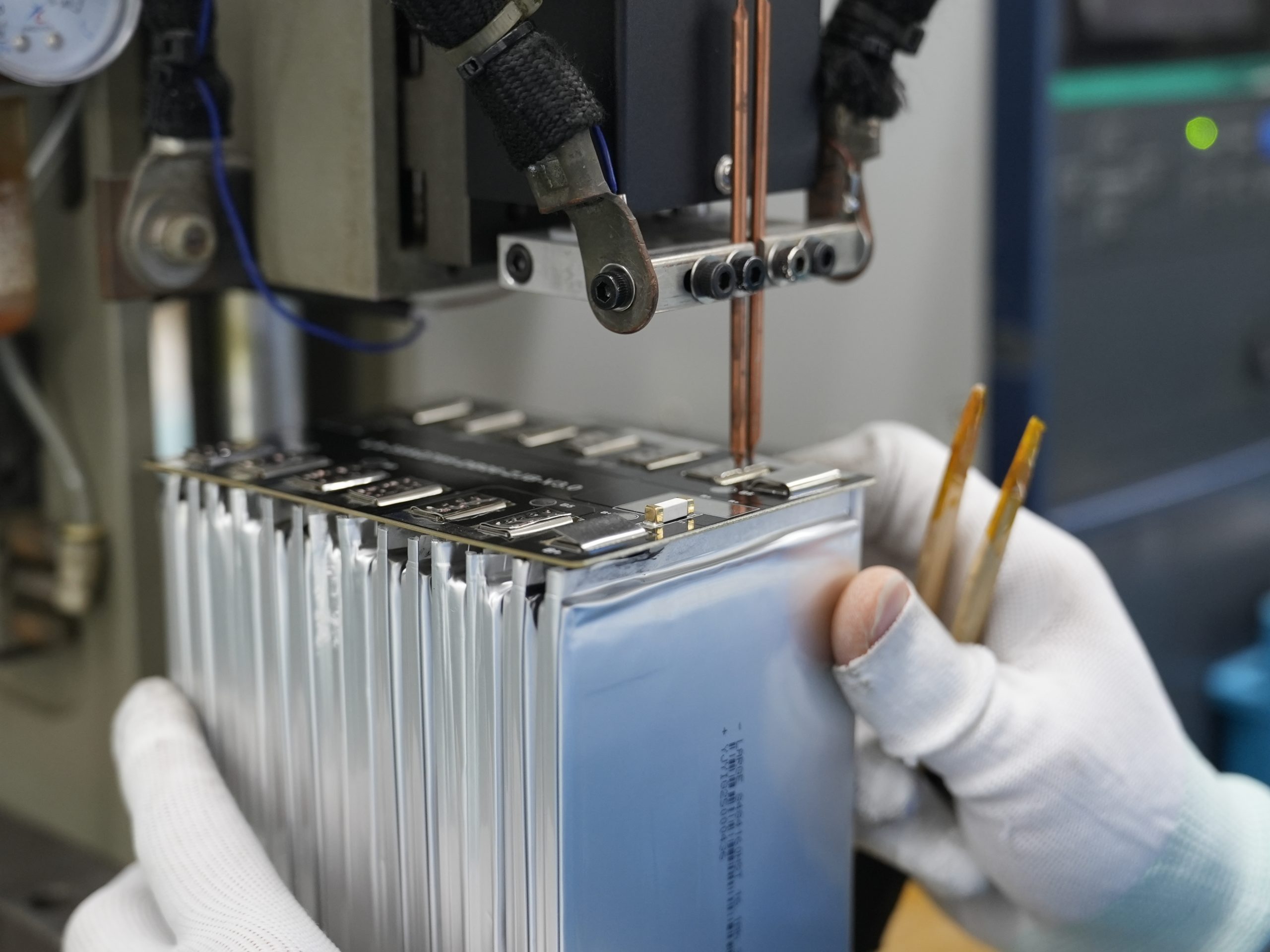
4.1 Safety Standards and Certifications
You have to follow safety rules when picking a battery for inspection handheld terminals. These rules help keep everyone safe and lower risks. Safety certifications show the battery meets important standards. You should check for these certifications before buying:
UL 1642 for lithium batteries
UL 2054 for household and commercial batteries
UL 1989 for valve regulated or vented batteries
UL 4200A for products with button or coin cell batteries
UL 2271 for batteries in light electric vehicles
UL 2056 for power banks
UL/CSA/IEC 60950 for information technology equipment
UL/CSA/IEC 60065 for audio and video devices
IEC/UL 62133-1 and IEC/UL 62133-2 for portable sealed secondary cells
Japan’s DENAN Ordinance Article 1
CTIA—IEEE 1625 and 1725
Taiwan’s BSMI standards
IATA/UN DOT/UN 38.3 T1-T8 (or IEC 62281)
Different places have different rules for batteries. In Europe, you need a CE Mark for batteries. In North America, UL 9540 is needed for legal use. CE Marking is done by the company, but UL 9540 needs outside testing. You can read more about safe battery sourcing in the conflict minerals statement.
Tip: Always look for safety certifications and follow safety steps when picking lithium battery packs for your work.
4.2 Durability in Harsh Conditions
Batteries must be tough to last in hard inspection places. The materials and how they are made matter a lot. The table below shows what helps batteries last longer:
Material/Method | Description |
|---|---|
UV-resistant ink | Labels stay readable in sunlight and heat. |
Engraved/printed markings | Product info stays clear and permanent. |
Batteries pass tests with water, acid, and cleaning solutions. |
Lithium battery chemistries like LiFePO4, NMC, LTO, and solid-state work well in tough places. Use batteries with strong seals and rust-proof parts. Check your battery often to find problems early.
4.3 Protective Accessories for Terminals
Protective accessories help batteries last longer and stop damage. You can use terminal protectors, covers, and special coatings. The table below lists some helpful products:
Product Name | Features | Benefits |
|---|---|---|
DieHard Battery Accessories: Terminal Protectors & Grease | Universal kit, high temp silicone grease, stops corrosion | Extends battery life, full power |
Battery Terminal Covers & Insulators | Shields terminals from corrosion and chemicals | Long-lasting performance |
CRC Single Use Battery Terminal Protector | Lead-free coating, stops corrosion | Prevents failure, hard starts |
Use these accessories and check your battery often. Battery management systems help you watch battery health and keep it safe. Learn more about battery management systems.
Note: Good care and protective cases help your battery stay safe and last longer.
Part5: Maintenance and Replacement
5.1 Battery Care Best Practices
You can keep your battery working well by following easy steps. Taking care of your battery stops problems and keeps your inspection handheld terminals working. Here are some simple tips:
Charge your battery slowly. Do not leave it charging all night.
Use a charger that is about one-fourth the battery’s size.
Store your battery in a cool, shady place. Heat makes batteries wear out faster.
If you will not use your lithium battery pack for a long time, keep it half charged.
Clean the battery terminals often so they do not rust.
Keep batteries dry. Water can make them rust and not last as long.
Doing these things helps your battery last longer and saves money. Your equipment will work better and you will not lose power by surprise.
5.2 Replacement Planning
You need a plan to change batteries so your inspection handheld terminals always work. Tools can help you know when to replace batteries before they break. These tools watch how your battery works and tell you if there is a small problem. You can fix things early and stop bigger problems. Using this data means you only change batteries when you need to, which saves time and money.
Tools watch battery health in real time.
Finding problems early stops big failures.
Good planning helps you know when to change batteries.
Check how many times each lithium battery chemistry can be used. For example, LiFePO4 and LTO batteries last longer, but LCO and lithium metal batteries need to be changed more often. Use a table to see how long each battery lasts and plan when to change them:
Chemistry | Cycle Life (cycles) |
|---|---|
LiFePO4 | 2,000+ |
NMC | 1,000–2,000 |
LCO | 500–1,000 |
LTO | 3,000–7,000 |
Solid-state | 2,000+ |
Lithium Metal | 500–1,000 |
5.3 Cost and Lifecycle Management
Watching battery costs and how long they last helps your business save money. You should keep track of how much you use batteries, how often you change them, and how much you spend. Pick lithium battery packs that last a long time and are safe. This helps you spend less money over time and makes your equipment more reliable.
It is also important to think about the environment. You can read more about green battery choices in our approach to sustainability. Using batteries that last longer and recycling them helps your company protect the planet.
Tip: Check your battery plans often. Change your replacement plans when new lithium battery chemistries come out. This helps your inspection handheld terminals work their best.
You can pick the right battery system for inspection handheld terminals by using some simple steps. First, make sure the battery fits your device and gives enough power. Always think about safety rules and plan to take care of the battery often. Here is a checklist you can use:
Choose a battery type and voltage that works with your terminal.
Look for damage and change the battery if needed.
Ask suppliers for help and advice.
Check and improve your battery system often to get the best results.
Checking your battery often helps your team stay safe and work well.
FAQ
What lithium battery chemistry works best for inspection handheld terminals?
Pick LiFePO4 or NMC for most inspection handheld terminals. LiFePO4 lasts a long time and keeps voltage steady. NMC gives lots of energy. Both types work well in tough places.
How do I know if a battery is compatible with my terminal?
Check the battery’s voltage, size, and connector type. Make sure these match your terminal’s needs. Always read the manual from the maker. Use batteries with certified lithium chemistries like LiFePO4, NMC, or LTO for best results.
What safety certifications should I look for in lithium battery packs?
Look for UL 1642, UL 2054, IEC 62133, and CE Mark. These show the battery is safe and meets world standards. Certified lithium battery packs lower risks and help you follow rules.
How often should I replace lithium battery packs in inspection terminals?
How often you change batteries depends on chemistry and use. LiFePO4 lasts over 2,000 cycles. NMC lasts 1,000 to 2,000 cycles. LTO lasts 3,000 to 7,000 cycles. Track battery cycles and how well it works to know when to replace.
Chemistry | Cycle Life (cycles) |
|---|---|
LiFePO4 | 2,000+ |
NMC | 1,000–2,000 |
LTO | 3,000–7,000 |
Can lithium battery packs handle extreme temperatures?
Some lithium chemistries work better in hot or cold places. LTO and LiFePO4 batteries do well in harsh weather. Always check the battery’s temperature range in the datasheet before using it.


